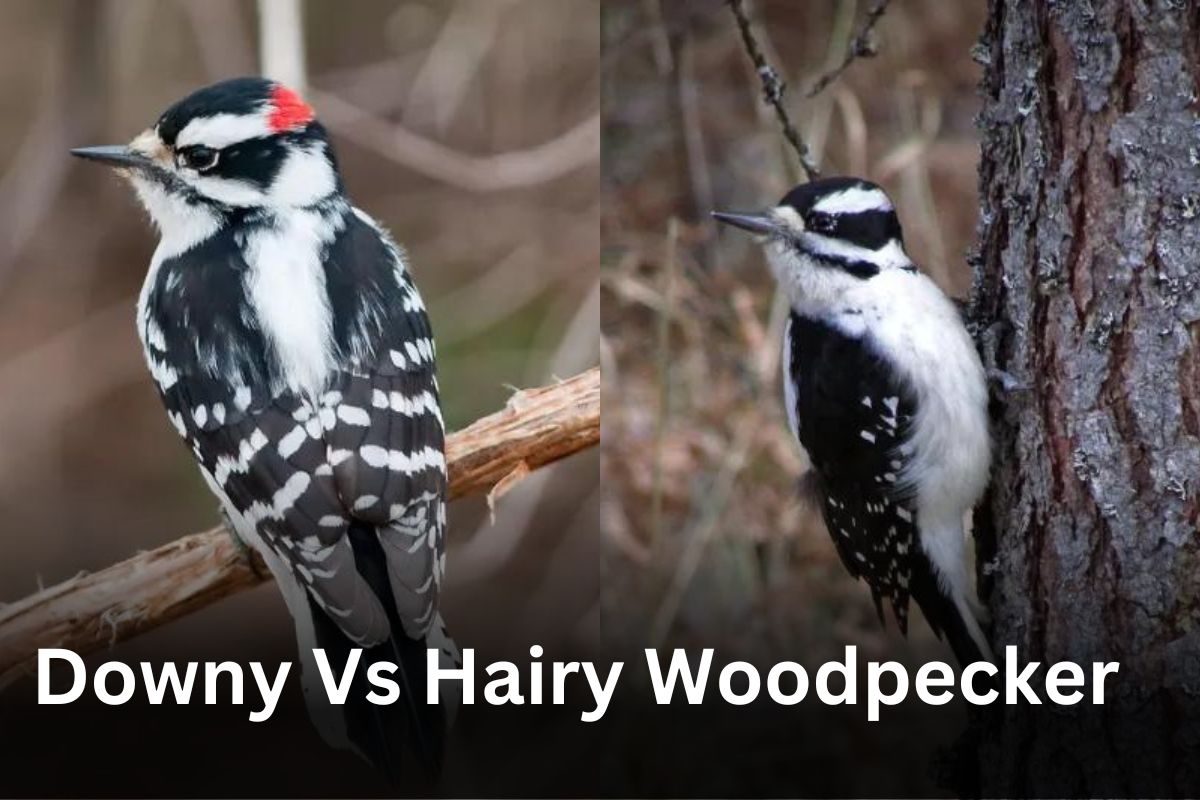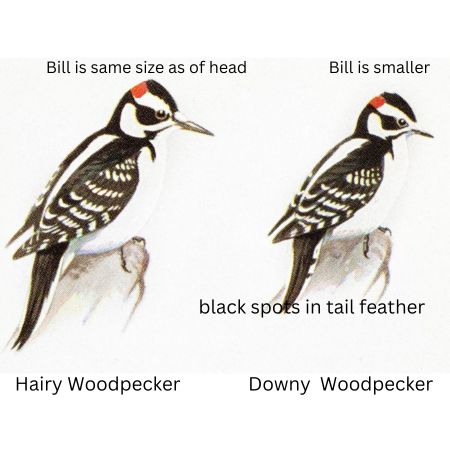Downy Woodpecker Vs Hairy Woodpecker: Detailed Analysis And Differences

Woodpeckers are a common sight in North American forests, and they add an element of excitement to any birdwatching expedition.
Two woodpecker species you may commonly encounter are the Downy and Hairy Woodpeckers.

While these birds share similar physical traits, there are notable differences that set them apart. In this blog post, we will explore the physical characteristics of both species, where to find them, and their behavior patterns, and offer tips for identifying each one.
Downy Woodpecker Vs Hairy Woodpecker
| Factors | Downy Woodpecker | Hairy Woodpecker |
|---|---|---|
| Range | Absent in Southwest and Mexico | All of North America |
| Size | 6.5 inches, smaller than a hairy woodpecker | 9.5-11 inches, larger than downy woodpecker |
| Tail Feathers | Barring the outer white feathers, black spotted mark. | Plain white outer feathers, with no such spots |
| Bill | In comparison, the bill is shorter than the head | Large bill, the same size as the head |
| Habitat | Forests and younger trees, likely to be spotted in urban areas | Deeper mature forests |
| Behavior | More Curious, can be spotted with other bird flocks | Timid, flies away when disturbed |
| Voice | Soft, lower-toned noise vibrations, chirps | Louder with high pitch, harsh screams |
Physical Differences between Downy and Hairy Woodpeckers
One way to distinguish between a downy woodpecker and a hairy woodpecker is by size comparison.
Size
The Downy Woodpecker is about 6.5 inches long with a wingspan of 9 inches which is roughly the size of a sparrow or chickadee.
On the other hand, Hairy Woodpeckers grow up to 9.5 to 11 inches long with wingspans reaching 15–18 inches.
Bill Length
Another distinguishing factor is bill length and shape. Both have bills suitable for excavating tree bark but differ slightly;
Downy woodpecker bill is stubby giving it its namesake. It has a bill shorter than the head.
Hairy woodpecker has a longer pointed beak, which compared to their head, is of the same length.
Tail
Other differences include tail feather spots where: Downy present barring on the outer white feathers, providing them a black spotted mark. Hairy woodpeckers possess no splotches at all.
Red patch on Head
The male Downy Woodpecker has a solid red patch on the back of its head, whereas the male Hairy Woodpecker has a red patch that is separated by a black line connecting the crown and nape.
Habitat & Distribution
Downy Woodpeckers prefer wooded areas such as parks or gardens located within urban space; Their primary location includes Eastern United States coastal cities like New York City or Boston metropolises; alternatively, rural forested lands work well too.
Hairy woodpeckers move near the Rocky Mountains among Canadian territories ranging through Mexico’s northern regions into California commonly seen across hiking trails passing through woods across North America.
Behavioral Differences
Downy woodpeckers often stick to the well-known territory of smaller twigs and branches, younger trees. They also tend to travel with other birds such as chickadees and titmice.
Hairy woodpeckers with longer bills can reach more significant areas. They also fly away when disturbed. They are not as curious as downy woodpeckers.
As for drumming Sounds and Frequencies when tapping into trees, hairy woodpecker has louder and are measured at higher pitches than Downy woodpecker. Downy woodpecker generates lower-toned noise vibrations.
Last but not least, vocalizations tend to vary between the two: Hairy woodpeckers express their presence through harsh screams, and stronger calls with the same pitch, while Downy woodpecker chirps come out in a language familiar birdsong and softer less demanding calls.
Similarities between Downy and Hairy Woodpeckers
Although there are differences that distinguish these birds from one another, they also share several physical characteristics such as:
Black-and-white barbed tail feathers that both males and females develop during maturity stages or even overlapping ranges in different regions where they coexist.
Similar breeding behaviors include cavity-nesting practices– using dead trees available soon after mating occurs!
Tips for Identifying Downy and Hairy Woodpeckers
To identify each bird correctly is by observing their physical attributes like bill size/shape or coloration patterns on wings/tails combined with listening closely attentively when identifying sounds/vocalizations—recording sightings useful for comparison purposes later on online platforms like Macaulay Library of Cornell University websites



